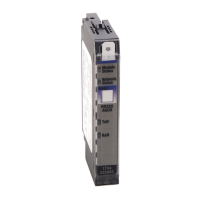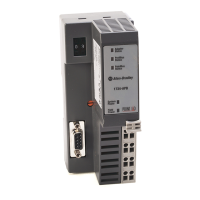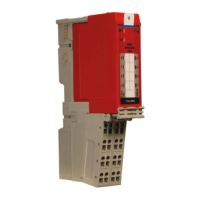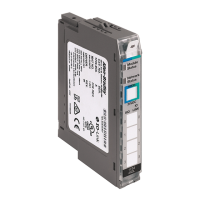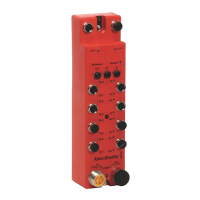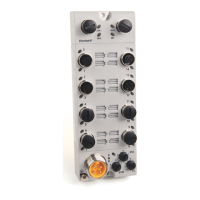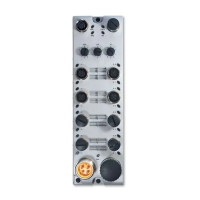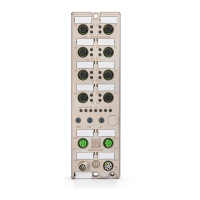24 Rockwell Automation Publication 1734-UM013C-EN-P - August 2010
Chapter 2 Safety Functions
Dual-channel Mode and Discrepancy Time
To support dual-channel safety devices, the consistency between signals on two
channels can be evaluated. Either equivalent or complementary can be selected.
This function monitors the time during which there is a discrepancy between the
two channels.
If the length of the discrepancy exceeds the configured discrepancy time
(0…65,530 ms in increments of 10 ms), the safety input data and the individual-
safety input status turns off for both channels. In Dual-channel Complimentary
mode, the safety input data goes to off/on for input channels n/n+1 respectively
as described in the chart below.
This table shows the relation between input terminal states and controller input
data and status.
The dual-channel function is used with two consecutive inputs
that are paired together, starting at an even input number, such
as inputs 0 and 1, 2 and 3, and so on.
The purpose of the discrepancy time is to allow for normal
differences between contact switching when demands are
placed on safety inputs. For this testing to operate correctly,
only a single demand on the safety input is expected during the
discrepancy time. If the discrepancy time is set too high, and
multiple demands occur during this time, then both safety input
channels will fault.
Table 1 - Terminal Input Status and Controller I/O Data
Dual-channel Mode Input Terminal Controller Input Data and Status Dual-channel
Resultant
Data
Dual-channel
Resultant
Status
IN0 IN1 Safety
Input 0 Data
Safety
Input 1 Data
Safety
Input 0 Status
Safety
Input 1 Status
Dual-channels, Equivalent OFF OFF OFF OFF ON ON OFF Normal
OFF ON OFF OFF OFF OFF OFF Fault
ON OFF OFF OFF OFF OFF OFF Fault
ON ON ON ON ON ON ON Normal
Dual-channels,
Complementary
OFF OFF OFF ON OFF OFF OFF Fault
OFF ON OFF ON ON ON OFF Normal
ON OFF ON OFF ON ON ON Normal
ON ON OFF ON OFF OFF OFF Fault

